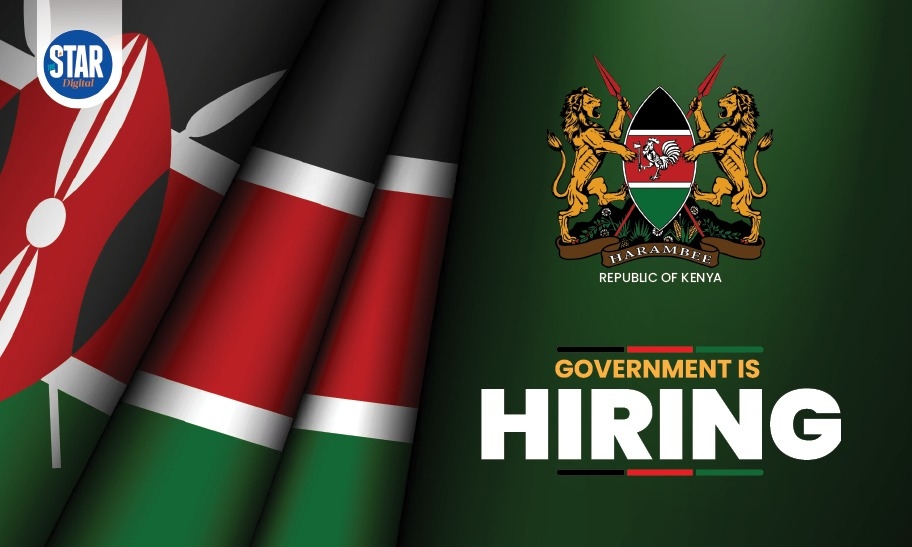 Health Cabinet Secretary Aden Duale flanked by PS Public Health and Professional Standards Mary Muthoni and PS Medical Services, Dr Ouma Oluga and other partners during the launch of the landmark report on Tuesday, October 28, 2025, in Nairobi. Photo/ Collins William.
Health Cabinet Secretary Aden Duale flanked by PS Public Health and Professional Standards Mary Muthoni and PS Medical Services, Dr Ouma Oluga and other partners during the launch of the landmark report on Tuesday, October 28, 2025, in Nairobi. Photo/ Collins William.
Despite commendable progress in access to healthcare,
maternal mortality in Kenya remains alarmingly high, surpassing that of its
East African neighbours.
The latest Kenya Health Facility Assessment 2024 – Quality
of Care and Human Resources for Health Report, reveals that while health
coverage has expanded, the quality of care remains inconsistent, with serious
gaps in diagnosis, treatment and availability of essential drugs undermining
maternal health outcomes.
According to the report presented, Kenya’s health system
continues to struggle with stagnation in maternal outcome indicators despite
increased investments. The assessment, which covered 3,605 facilities across
all 47 counties, found that only 37 per cent of facilities offering delivery services
had all seven Basic Emergency Obstetric and Newborn Care (BEmONC) signal
functions.
Moreover, less than half, 46 per cent of Level 4 and 5
hospitals had the full complement of Comprehensive Emergency Obstetric and
Newborn Care (CEmONC) signal functions, meaning that many expectant mothers do
not receive timely, lifesaving interventions during childbirth.
The report highlights a critical mismatch between diagnosis
and treatment across various conditions, including those affecting mothers and
newborns. For instance, only 40 per cent of childbirth emergencies, such as
postpartum haemorrhage, were correctly managed, and treatment for birth asphyxia
was appropriately administered in just 36 per cent of cases.
“The mismatch between diagnosis and treatment significantly
contributes to preventable maternal deaths,” the report notes, adding that a
large proportion of health workers lack the tools, training or support to
deliver guideline-based care.
Drug shortages further exacerbate the situation. The
assessment revealed frequent interruptions in basic laboratory and medical
supplies, particularly those essential for managing pregnancy complications and
newborn emergencies.
Human resource constraints make the problem even bigger.
Kenya’s core health workforce density stands at 14.3 per 10,000 population, which is well below the World Health Organisation’s recommended 23 per 10,000
for achieving universal health coverage.
The reports highlight that only four counties—Nairobi,
Kisumu, Mombasa, and Nyeri—meet the threshold. The rest of the country
continues to suffer from acute shortages of skilled birth attendants and
obstetric specialists, especially in rural areas where maternal mortality is
highest.
Additionally, health worker absenteeism remains a challenge,
with 30 per cent of personnel absent during unannounced visits, mainly due to
unplanned reasons such as strikes, illness, or personal matters. These staffing
gaps mean that many women in labour are left unattended or receive care from
inadequately trained providers.
The report also found that misclassification of health
facilities contributes to poor quality maternal care. Some Level 2 and 3
facilities are performing services beyond their approved capacity—such as major
surgeries and Caesarean sections—without the necessary infrastructure or
expertise.
“Most of the misaligned facilities are private, and their
service expansion without adequate capacity increases the risk of poor maternal
outcomes,” the report warns.
To address these gaps, the Quality of Care and Human
Resources for Health Report makes several key recommendations. It calls for
increased investments to enhance facility readiness and capacity, ensuring that
all health facilities can provide the appropriate level of maternal and newborn
care.
It further recommends the reclassification of misaligned
facilities to align service delivery with the Kenya Essential Package for
Health (KEPH) levels. “Flag all facilities with misaligned KEPH levels and
services for reassessment and reclassification,” the report advises.
Human resource management is another priority. The report
calls for a national strategy to ensure equitable recruitment, deployment, and
retention of health workers, coupled with continuous capacity building through
mentorship and on-the-job training. It also emphasises the need for stricter
governance systems to reduce absenteeism and reinforce positive workplace
practices.
“Institutionalise continuous capacity-building measures for
health workers, including on-job training, mentorship, and clinical
simulations,” the report recommends.
To ensure consistency in care, the report urges the Ministry
of Health to make clinical guidelines accessible to all providers and to
enforce postpartum monitoring standards through supervision and clinical
audits.
Strengthening documentation of vital signs and adherence to
protocols, particularly during the postpartum period, is essential for reducing
maternal deaths due to preventable causes such as haemorrhage and sepsis.
While the government’s efforts to expand healthcare coverage
are commendable, the findings of this report reveal that quality, not just
access, must be prioritised if Kenya is to close the gap with its regional
peers.
“Investments in health must translate into improved outcomes
and client satisfaction,” the report advises. Until Kenya bridges the gap
between diagnosis and treatment, ensures consistent drug availability and
strengthens its health workforce, maternal mortality will remain a tragic
reflection of systemic inequities within the country’s health system.


















